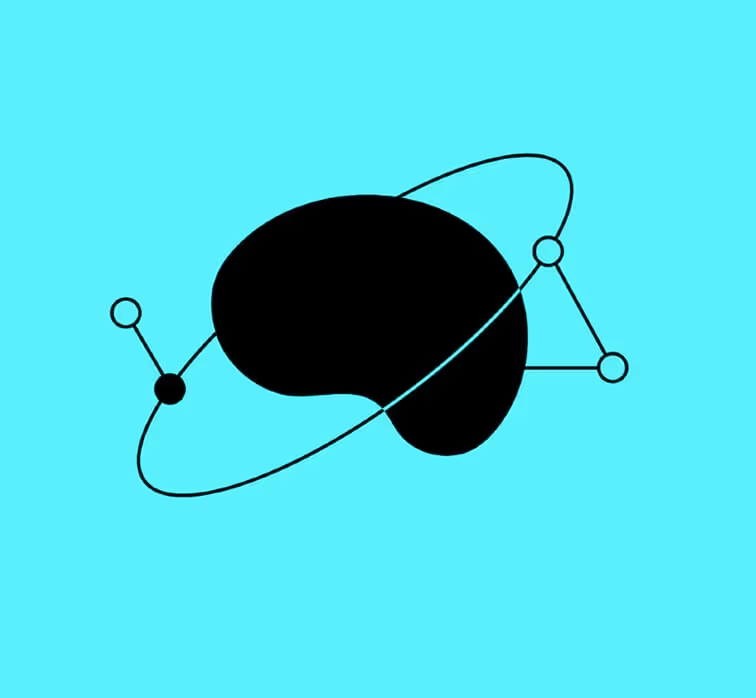
It’s easy to think of art and science in opposite terms. Science is objective; art is subjective. Science is driven by data; art is driven by emotion. Science is true whether you believe it or not. When it comes to art, you like what you like.
However, like all binary thinking, this framework eliminates the space between and limits our understanding of how art and science intersect. There’s no shortage of art in science. We see it on our clients’ work all the time (that’s fodder for another article). Here, we’ll dig into some of the science that proves good design is good business.
The Aesthetic-Usability Effect: Well-designed things work better
Whether it’s a user interface, logo, datasheet or billboard, good design doesn’t just make the designer and client feel good about themselves. It makes the thing itself work better. In 1995, researchers from the Hitachi Design Center defined the Aesthetic-Usability Effect. Consumers were asked to test multiple variations of an ATM interface and rate aesthetics and functionality separately. They assigned higher usability scores to the options they found aesthetically pleasing, regardless of whether they were actually more usable.
As humans, we don’t just love beautiful things. We trust them more, remember them better and assign them a higher value.
Beauty pleases the eye and the brain
As humans, we don’t just love beautiful things. We trust them more, remember them better and assign them a higher value. University College London researchers placed humans in MRI machines and exposed them to images of paintings and pieces of music they had previously classified as beautiful. Their medial orbito-frontal cortices (part of the brain’s pleasure center) lit up like so many beautiful Christmas trees.
While this supports the (not really contested) idea that we derive pleasure from beauty, it also suggests that beauty lies (at least in part) in the eye of the beholder.
Universal(ish) design truths
If the goal of a creative endeavor is to please and/or build trust with the audience, then it’s critical to know what your audience deems beautiful. And that standard will change and evolve across demographics, location and time.
That being said, there are some visual design principles brands can follow to make their outreach materials more beautiful and trustworthy.
Margins are our friends
In book and magazine design, margins allow you to hold the page comfortably without your thumbs covering the words. But margins also serve a deeper psychological purpose, providing breathing room and improving legibility. You don’t appreciate them when they’re present as much as you miss them when they’re missing.
White space is the place
Fight the urge to fit as much content as the page will hold. White space literally gives the eye a place to rest, reducing cognitive load and improving comprehension. White space is not wasted space. It’s the opposite.
Visual hierarchy is a power tool
As viewers and consumers, we need help knowing what’s important. Use composition, visual weight and color to lead the viewer’s eye to what matters most.
Mind the grid, soothe the soul
An invisible structure that graphic designers use to build harmonious layouts, the grid is the unsung hero of the industry. Design without a grid and you’re sure to make a visual mess. Humans crave organization, and the grid delivers.
Set the mood with smart design
When someone looks at a piece of marketing you’ve labored over, how do you want them to feel? Curious, confident, assured, motivated? Unique design approaches can help evoke distinct emotions.
Design shapes our perceptions, influences our choices and creates memorable impressions.
Problem solved
Business communication is all about problem-solving. Graphic design is visual problem-solving. It distills complex ideas into digestible, compelling narratives your audience can easily grasp.
Design solutions address some of your most pressing business challenges. Good design will help you:
· Hold the viewer’s attention
· Deliver your message effectively
· Improve the user experience
· Increase accessibility
· Strengthen your brand image
· Elicit an emotional response
Design shapes our perceptions, influences our choices and creates memorable impressions. Good design can mean the difference between your message getting lost in clutter or forging a deep connection with your audience. In other words, it’s just good business.
{{OrangeQuote | ABOUT TOM CAMPBELL | Tom is Toolbox’s co-founder and creative director. When he’s not validating the merits of ordering pizza for lunch at the office, Tom can be found tending beer league hockey or playing drums for local bar bands. He’s also the keeper of TomLovesTheLibertyBell.com, a quirky repository of stories and stats on Liberty Bell replicas around the world.}}
{{OrangeQuote | ABOUT TOOLBOX CREATIVE | Toolbox Creative is a B2B Brand Engineering firm helping cool people in Additive Manufacturing, CleanTech and Emerging Technologies change the world. We distill complex technologies into powerful identity systems, websites and marketing tactics that create lasting impact and build brand love.}}






